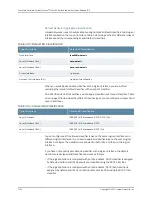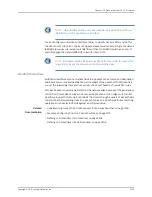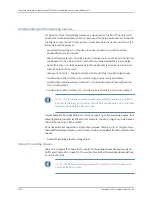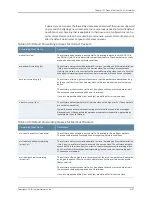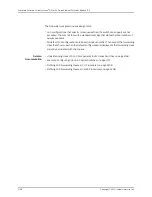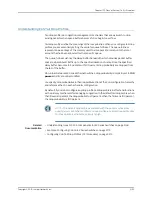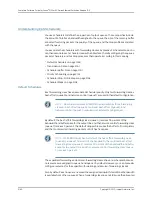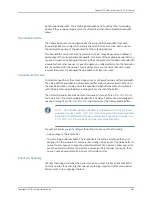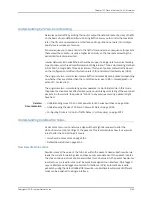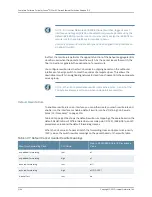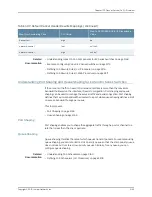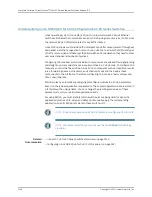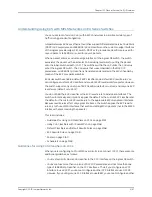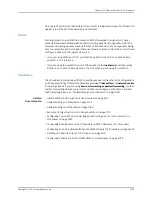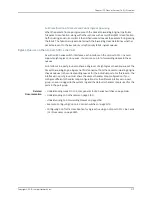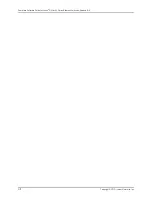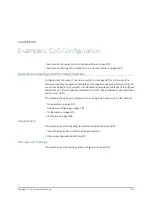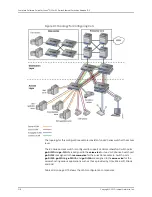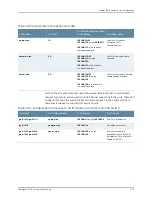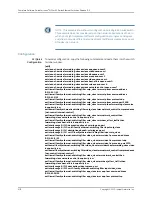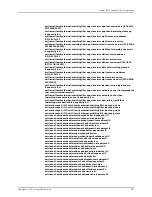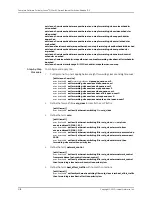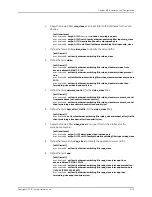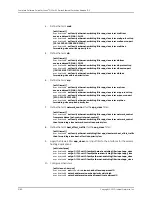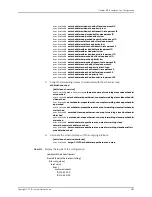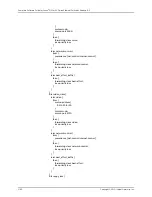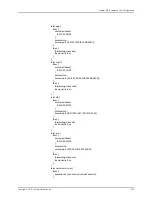
CCC interface on the same switch to use IEEE2. All the CCC interfaces on the switch
must use the same DSCP classifier and the same type of IEEE 802.1p classifier.
•
You
cannot
configure one CCC interface as DSCP and another CCC interface as IP
precedence, because these classifier types overlap.
•
You
can
configure one CCC interface as DSCP and another CCC interface as IEEE
802.1p.
•
You
can
configure one CCC interface as both DSCP and IEEE 802.1p. If you configure
a CCC interface with both these classifiers, the DSCP classifier is used for routing Layer
3 packets and the IEEE 802.1p classifier is used for routing Layer 2 packets.
NOTE:
You can define multiple types of DSCP, IP precedence, and IEEE 802.1p
on the switch and use the different classifier types for the non-CCC interfaces
on the switch.
Using CoS Classifiers with IP over MPLS
When you are configuring CoS for IP over MPLS, the customer-edge interface uses the
CoS configuration that has been set up for the switch as the default. You do not have to
bind a classifier to the customer-edge interface in this case. There are no restrictions
regarding using multiple types of DSCP, IP precedence, and IEEE 802.1p on the same
switch.
•
You can modify the CoS classifier for a particular interface, but it is not required.
•
You can configure one interface as DSCP1 and another as DSCP2 and another and IP
precedence, and so forth.
Default Classifiers and Default Rewrite Rules
The default classifiers support only two forwarding classes,
best-effort
and
network-control
, and use only two queues,
0
and
7
. However, EX Series switches support
up to sixteen forwarding classes and eight queues. To use the additional forwarding
classes and queues, create a custom classifier. To modify the code point and loss priority
for a specific forwarding class, configure a rewrite rule on the switch. The default rewrite
rule for EXP is enabled in the default configuration. However, the default rewrite rules
for the other classifiers are not enabled in the default configuration. You can display the
default classifier mappings and default rewrite mappings by entering the
show
class-of-service
command on the switch.
EXP Rewrite Rules
When traffic passes from the customer-edge interface to an MPLS interface, the DSCP,
IP precedence, or IEEE 802.1p CoS classifier is translated into the EXP bits within the
MPLS header. You cannot disable the default EXP rewrite rule, but you can configure
your own custom EXP classifier and a custom EXP rewrite rule. You cannot bind the EXP
classifier to individual MPLS interfaces; the switch applies it globally to all the
MPLS-enabled interfaces on the switch.
Copyright © 2010, Juniper Networks, Inc.
3168
Complete Software Guide for Junos
®
OS for EX Series Ethernet Switches, Release 10.3
Summary of Contents for JUNOS OS 10.3 - SOFTWARE
Page 325: ...CHAPTER 17 Operational Mode Commands for System Setup 229 Copyright 2010 Juniper Networks Inc ...
Page 1323: ...CHAPTER 56 Operational Mode Commands for Interfaces 1227 Copyright 2010 Juniper Networks Inc ...
Page 2841: ...CHAPTER 86 Operational Commands for 802 1X 2745 Copyright 2010 Juniper Networks Inc ...
Page 3367: ...CHAPTER 113 Operational Mode Commands for CoS 3271 Copyright 2010 Juniper Networks Inc ...
Page 3435: ...CHAPTER 120 Operational Mode Commands for PoE 3339 Copyright 2010 Juniper Networks Inc ...
Page 3529: ...CHAPTER 126 Operational Mode Commands for MPLS 3433 Copyright 2010 Juniper Networks Inc ...

